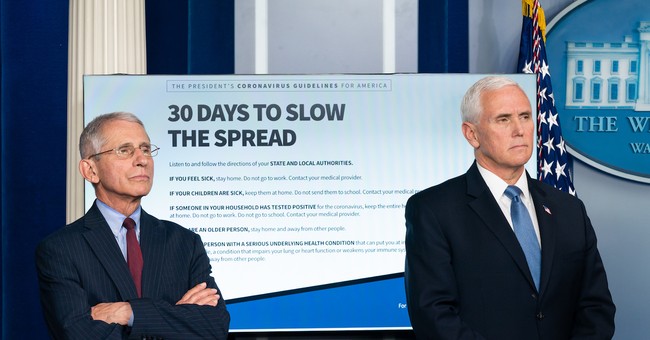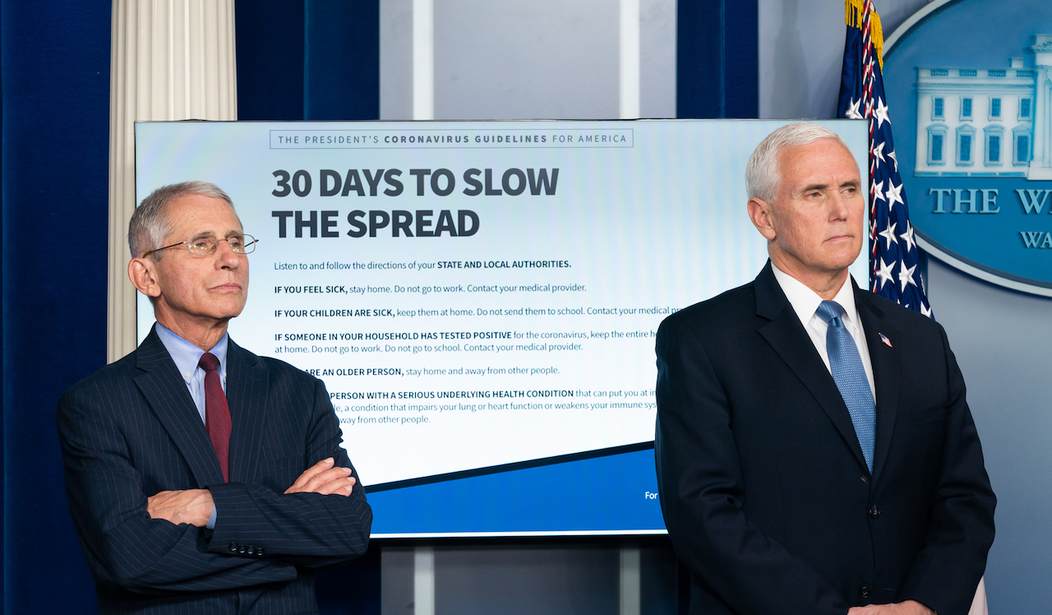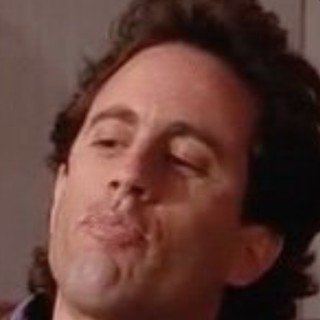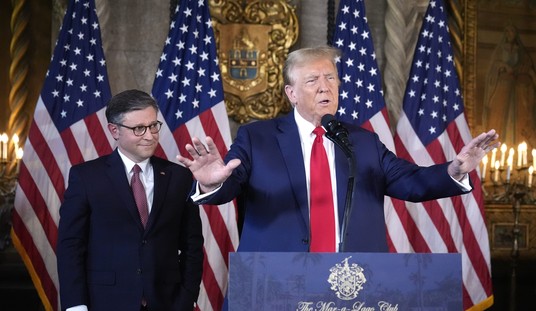
Vice President Mike Pence, joined by Director of the National Institute of Allergy and Infectious Diseases Dr. Anthony S. Fauci, listen as President Donald J. Trump takes questions from the press during a coronavirus update briefing Tuesday, March 31, 2020, in the James S. Brady Press Briefing Room of the White House. (Official White House Photo by Andrea Hanks)
Earlier today, my colleague Nick Arama wrote on some of the Wuhan virus models being adjusted downward. This came after reports out of New York showed that there appears to be no coming crisis as far as hospital beds and ventilators go.
But in the midst of this great news, questions are arising about just how reliable these models are and what it means for us moving forward. The fluctuations have been dramatic in some cases and it’s reasonable to ask how that affects the plan for getting as many people back to work as possible.
Ben Shapiro commented on the New York model earlier.
Didn't these initial models take into account social distancing and staying home? https://t.co/o5NZvWdbmC
— Ben Shapiro (@benshapiro) April 6, 2020
The 55,000 on the model above was the low end, which means it took into account the assumption of heavy social distancing and restrictions. Yet, the track New York is on is going to significantly undershoot even the former best-case scenario.
Here’s Sean Davis on the same model.
The models assumed full “social distancing,” so you can’t claim that “social distancing” is the reason the numbers are lower than the predictions. The actual reason they’re lower is simple and obvious: the models were complete garbage from the beginning. https://t.co/EEACvcL2H7
— Sean Davis (@seanmdav) April 6, 2020
It’s not just New York. We are seeing large shifts in other states as well, mostly down, but some up.
The model projected 78 deaths in Massachusetts Sunday w/ a range from 22-204. There were just 15 deaths reported.
— Chuck Ross (@ChuckRossDC) April 6, 2020
As Ross notes, the revision up in Massachusetts appears to be grossly wrong, with deaths coming well below even the lowest part of the lowered range.
I can hear the responses now. What we are doing is working so how is it helpful to talk about the fact that the models were wrong?
I think that’s way too simplified. We can not remain locked down another full month because the damage to the economy will be unbelievably deep and harmful to average Americans. What we need to do now is not be afraid to reevaluate why these models were so inflated and whether that means we can start to transition back to normal life sooner rather than later.
Yes, there are risks, but there are also profound risks to essentially destroying the economy. That includes deaths that could be prevented by finding a middle ground that still promotes social distancing yet allows people to go back to work in most cases. Our leaders need to start coming up with some hard data about what aspects of our mitigation are actually working and what’s unnecessary. Right now, it feels as if we are flying blind, with very little rationale for some of the things we are doing. For example, would social distancing and masks be just as effective as a total lockdown? These are the kinds of questions that must be answered soon.
Where we go from here is still up in the air, but it’s time to stop pretending it’s taboo to talk about these models being wrong and what it means. We need a path forward, even if it’s still some weeks out.














Join the conversation as a VIP Member